Nic Eckmayer explores a marginally tapped area of beauty through ceramics and sculpture in a process that is informed by eastern arts, natural materials, and a controlled level of chance. The artworks straddle utilitarian and fine arts strategies to produce imperfect, yet visually provocative, tactile objects. This week The COMP Magazine caught up with Eckmayer at the Rialto Art Center’s ceramic studio to discuss his intuitive process, teaching approach, and how Japanese Wabi-Sabi techniques have informed his studio practice.
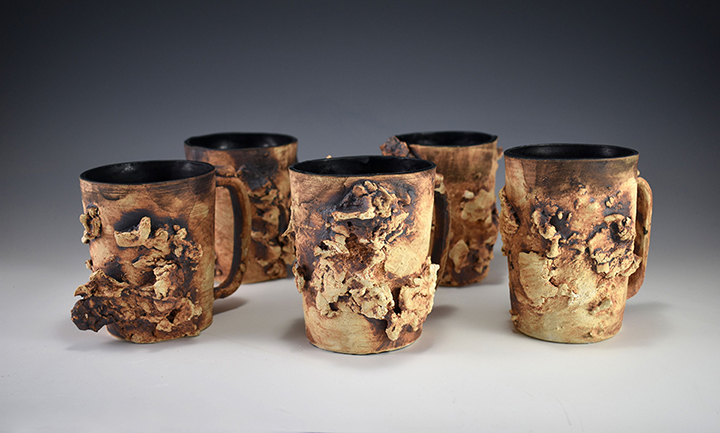
Let’s start with your background. You are from New Lenox, and studied at JJC and Eastern Illinois University. Can you discuss your introduction to ceramics?
I’m from New Lenox. One town over from Joliet. I took an art class as a senior in high school because it was required to graduate, but I didn’t think about art until Junior College. I went to Joliet Junior College and then transferred Eastern Illinois University where I got my BFA and my MA. Originally, I thought I wanted to do more drawing and painting, and I was going to transfer to Northern Illinois University, but the advisor there said I could get some more elective credits at JJC so I stayed another year and saved myself a bunch of money. One of those classes was ceramics. The first day the instructor had us jump on the wheel and just try it with no instruction. I remember coming in the next day and trying it some more. Soon I was just spending hours and hours each day working on ceramics, and eventually I just sat down and said this is what I’m doing now. I’m a very tactile person. I’m drawn to touch and feel. When I was working on my paintings, I would hold them and angle them instead of putting them on an easel. Clay just clicked and made sense to me.
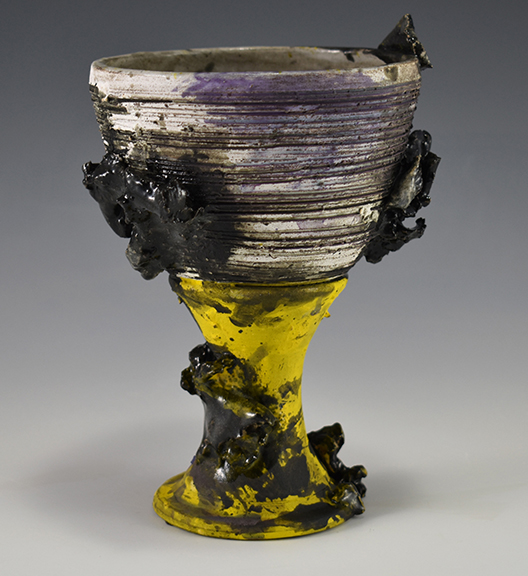
Nic Eckmayer, Sludge Grail #3, underglaze and glaze on stoneware,
4.25"x4.25"x6.5", 2021Can you discuss your attachment to the hands-on aspects of creating 3-Dimensional artworks? What about the messiness of the ceramics studio do you find of interest?
I think my practice has aspects of all three things that you mentioned. To me the best art has a bunch of different layers and meanings that can be explored. As I mentioned in the previous email, in my mind I have two different ceramic practices that influence each other. One is more functional, and I think is more formalist in nature and the other sculptural vessel practice takes that functional and introduces more conceptual ideas. I love clay. I love utilising clay at different stages of dryness and completion together to create pieces.
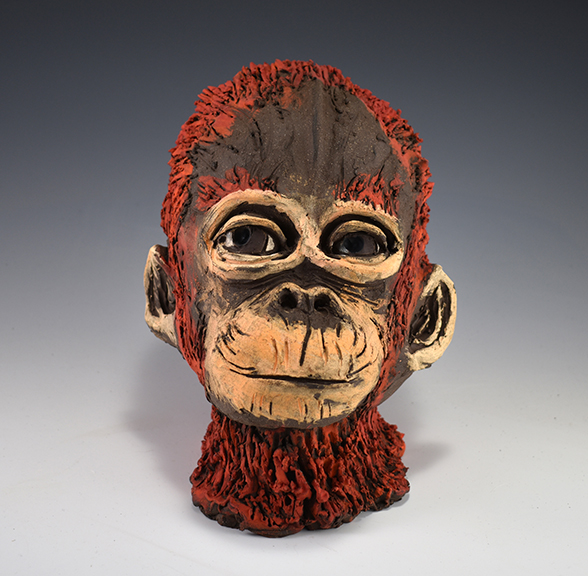
In terms of the conceptual ideas and items that inform your practice, you not an interest in eastern philosophy and application. Can you expand upon this?
I’m heavily influenced by the idea of Wabi-Sabi which is a Japanese philosophy that comes from the tea ceremony. I don’t completely understand it. I’m by no means a master of it. What I take away is this simple, utilitarian, austere beauty that’s derived from perfect imperfection. In my mind that aligns perfectly with the late 80s early 90s grunge movement which is what I grew up with as a kid which I think affects a lot of my aesthetic. I pull a lot of inspiration from music and different types of music. I think art begets art. A lot of the sculptural works are also thrown in sections and combined. I think that’s a beautiful metaphor about people have a bunch of different aspects of their personality to make a whole person. I think I answered your question but if not, the short answer is both. To me art has something to say and has to look good and do a good job of saying it.
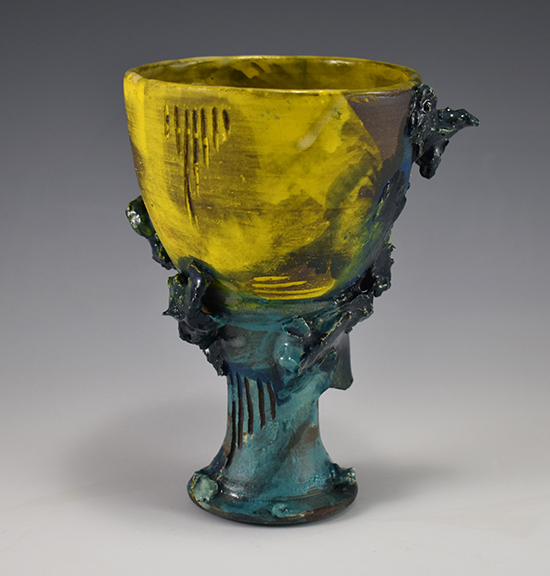
You create an interesting intersection of fine and utilitarian artforms in your cups and bowls. Can you discuss the process of creation?
So, the beginning process to most of my forms is thrown on the wheel. To me a well thrown form is like a beautifully made canvas. If it is not done well than the work that goes on it can only be so good, but just a beautifully thrown form isn’t good enough in my mind. Again, it is like a blank canvas, so you have to add to it. I generally start with some idea of what the end goal for the piece is or the design that I want to create, and I throw the initial form to accentuate that idea. Generally speaking, if I have an idea that the form is going to be used in everyday use then there are certain design features I will use. If it’s going to be used it needs to be light, but not too light that it breaks. If it needs a handle the handle should be good to hold. These ideas are usually for what I call my pottery practice. For my sculptural vessels there are a lot looser guidelines and ideas. Usually that comes from several ideas I have in my head that form a really loose sketch. I will jot ideas and concepts down that I want to use, but rarely will I use a starting sketch as a basis for the form.
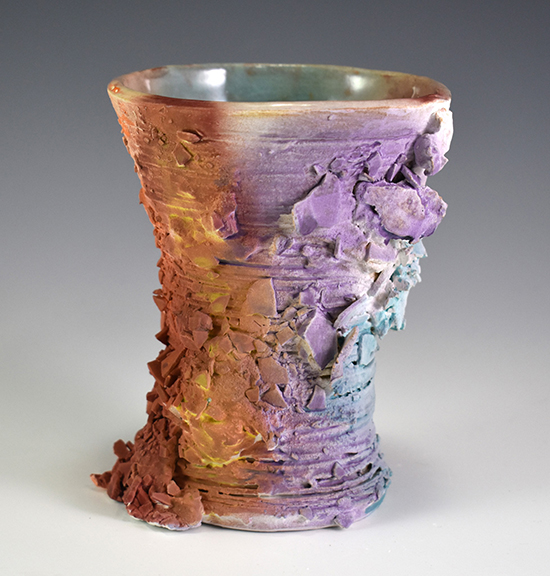
You are now teaching in the Art & Design Department at USF, what are some of the consistent items you hope to demonstrate to your students?
As a college level ceramics instructor, I end up having students that are majors and non-art majors. What I hope all of them end up getting is that art is finding solutions to problems that you did not know you had. Problem solving is what I hope is being taken away by everyone because you’ll be hard pressed to find an industry where they don’t need people with problem solving skills. I set up class so that the first few weeks we are learning basic building techniques, which I also hope they take away from the course. Then the assignments become open ended and I want students to figure out how to make something within the prompt that they are overall happy with. It’s very important to me that students like and are happy with their own work.
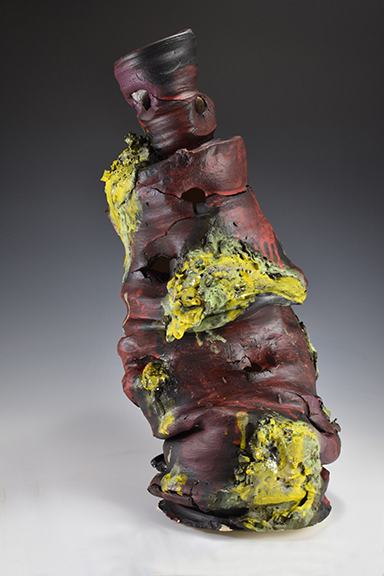
10″x8″x21″, 2020
What do you value most in your ceramics practice?
I think of my work as being in the vein of abstract expressionists. Clay is able to convey a lot of emotion and take a lot of abuse and work. I think what I value most about ceramics is the making of the objects themselves and the expression that the material gives. Even the easiest and most intuitive works become belaboured. The expression and the effort put into the work is the biggest thing for me, but I can’t just make any old pile. It needs to look good. I’m of the mind that once I make a piece it is no longer for me and it’s up to the interpretation of the viewer, and if the viewer isn’t appreciating it then I feel like I haven’t completed my job.
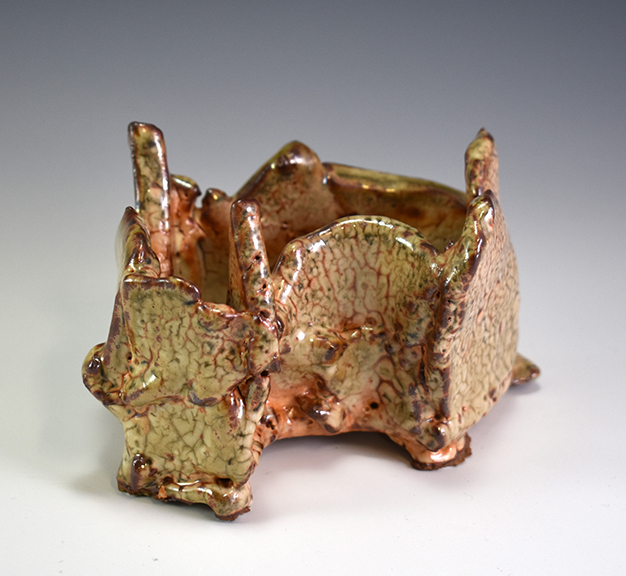
What are you currently working upon? Do you have any specific projects or ideas you are currently developing?
I’m currently working on adding in sculpted facial features into the work. I recently made a piece for an art show for the Plum Creek Nature Center which is named “George the Orangutan” because it’s the head of an orangutan, and I have this love for sculpting facial features into the clay. So, I started to wonder how I could incorporate it into the work I’m currently doing without making a body of work that’s completely different. For the last two Octobers I did Mugtober which is like Inktober or Drawloween with prompts and a drawing a day, but I make a mug instead of a drawing, and that’s faces but it’s kind of it’s own thing so I really wanted to find a way to integrate it into my sculptural vessels without it being a folk art face vase.
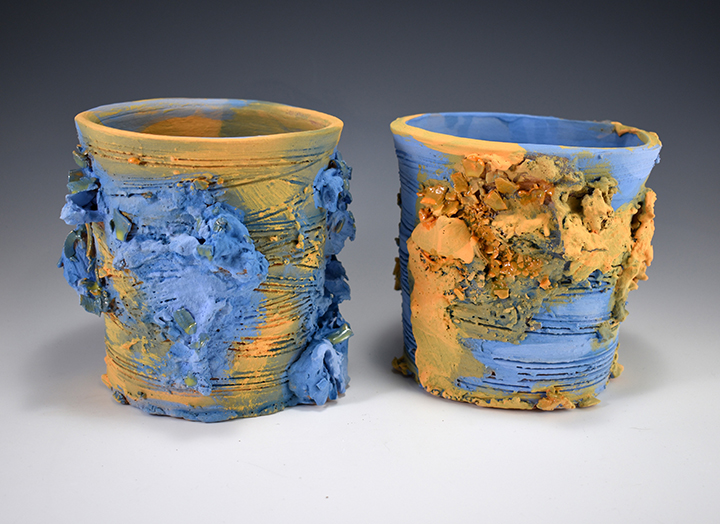
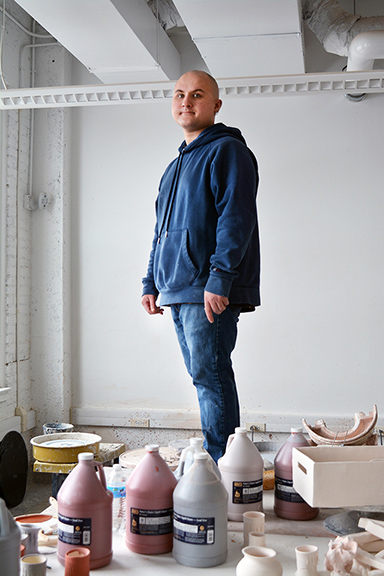
University of St. Francis, Joliet, Illinois, 2021
Interview and portrait by Chester Alamo-Costello


